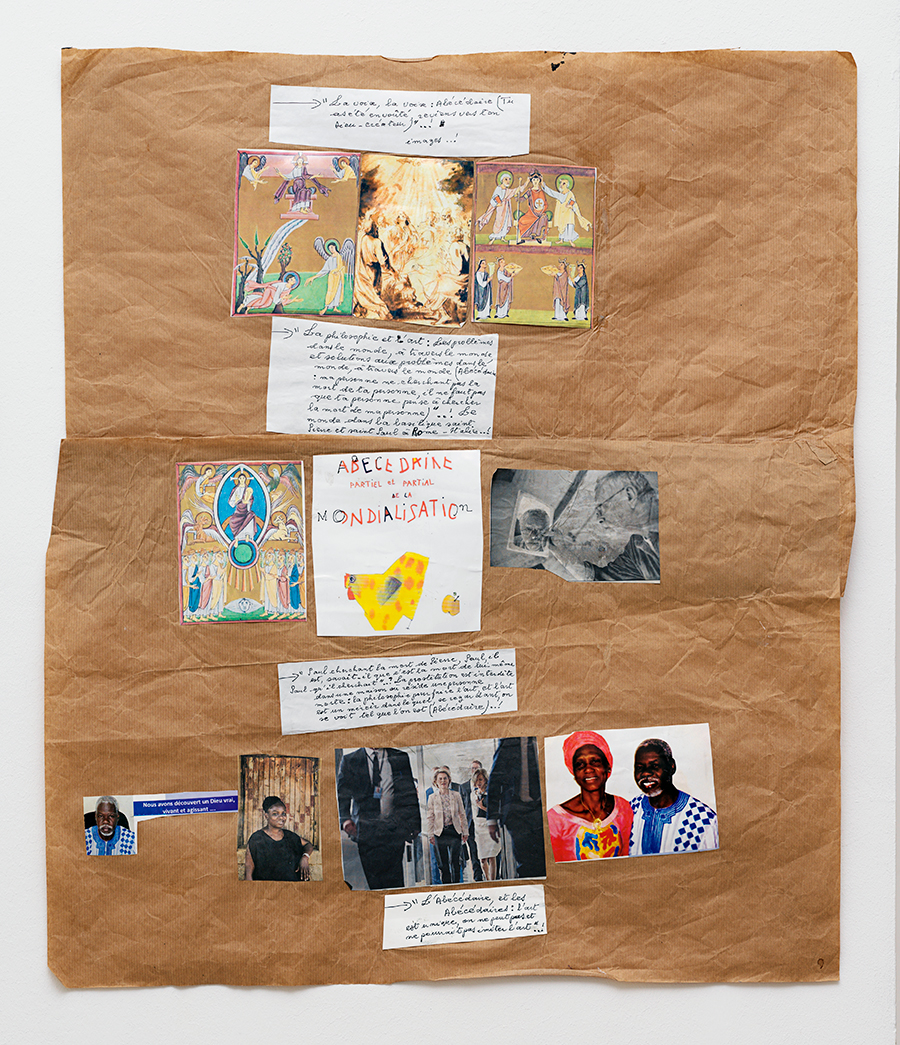How to Make Sense of Georges Adéagbo’s Cultural Fragments
The artist’s installation at Barbara Wien, Berlin, leaves things pleasingly open to interpretation
The artist’s installation at Barbara Wien, Berlin, leaves things pleasingly open to interpretation

Magazines, newspapers, records, bottles, textiles, statues, books and postcards cover the walls, baseboards and floor of Barbara Wien in Berlin. These materials – which comprise the gallery’s current installation “L‘Abécédaire de Georges Adéagbo: La Civilization Parlant et Faisant Voir la Culture..!” (The Abecedary of Georges Adéagbo: Civilization Speaking and Showing Culture, 2020) – are laid out in symmetrical arrangements and bustling clusters, interspersed with handwritten notes in French. Think of a flea market crossed with the work of a weekend anthropologist, or the office of a Freudian analyst, filled with the totems of overlapping worlds.

It is tempting, when looking at Adéagbo’s web of cultural fragments, to search for secret storylines, upending linkages, incisive commentaries. And it is equally to the work’s benefit that such connections seem only tangential, the byproducts of an effort to capture the poetic, musical and literary energy of entwined societies. Given the frenetic variety of objects on display, Adéagbo appears to be guided in his choices by intuitive play. This montage installation gathers understated power from the cumulative effect of assembled cultural artefacts, with all of their semiotic and formal resonances.
Sure, clever jokes lurk here and there: an item of women’s underwear, for instance, sits above an article on Gustave Courbet’s L’Origine du Monde (1886), seemingly hinting at a means of covering the painting’s naked subject. But it would take a significant creative effort to fabricate convincing relationships between the other items: newspaper articles about Notre Dame in Paris, German bestsellers, the pan-African newspaper Jeune Afrique, ads for Giorgio Armani sunglasses and an album sleeve (one of many) by the Scottish rock band Bay City Rollers. Add to this carved wooden statues and reliefs, which were purchased at markets in Cotonou, and several paintings by a sign maker called Benoît Adanoumè, based on Adéagbo’s own annotated collages.

It may be that Adéagbo’s notes illuminate arresting correspondences between all of these things. Unfortunately, je ne parle pas français. Therefore, my ability to undertake this decoding effort was significantly hampered. I imagine many viewers may find themselves in a similar position. In this way, Adéagbo’s exhibition encapsulates the complex of sensorial information and uneven comprehension that defines our globalized world.
Aside from any interpretive meaning that Adéagbo’s notes might convey to francophones, their greater purpose, as fragments of language, is to signify the presence of a thinking and feeling subject working its way through overlapping cultures. Put another way: the text is a signature of embodied thought. Through this writing, and the commissioned paintings, an energizing tension arises between the impression of a great historical gust of cultural material and the more intimate fact of individual people working through it all. What we really experience here is the spirit of artists moving between currents of history and culture, collecting and transforming them from within.

Thinking about Adéagbo’s show, my mind drifted to the different orders of labour that enabled this exhibition: the Beninese carvers, Adanoumè the sign maker and the many unacknowledged graphic designers, typesetters, editors and writers. This aspect of hidden labour is just as important, if not more so, than the towering European intellects which show up in writing on Adéagbo’s work. I had to ask the gallery for information about Adanoumè and about the origin of the carved sculptures. Both go unmentioned in the press release – in contrast to Gilles Deleuze and Félix Guattari, from whose work the exhibition takes its title. This was disappointing. More than shedding light on this show, those most art world-friendly French philosophers cast a tired shadow. All of their rhizomatic meaning was immanent in the installation itself, with its overlapping textures of wonder and work.
‘L‘Abécédaire de Georges Adéagbo: La Civilization Parlant et Faisant Voir la Culture..!’ runs at Barbara Wien, Berlin, until 1 August 2020.
Main image: Georges Adéagbo, “L‘Abécédaire de Georges Adéagbo: la civilisation parlant et faisant voir la culture”..!, 2020, installation view, Barbara Wien, Berlin. Courtesy: the artist and Barbara Wien, Berlin; photograph: Nick Ash























